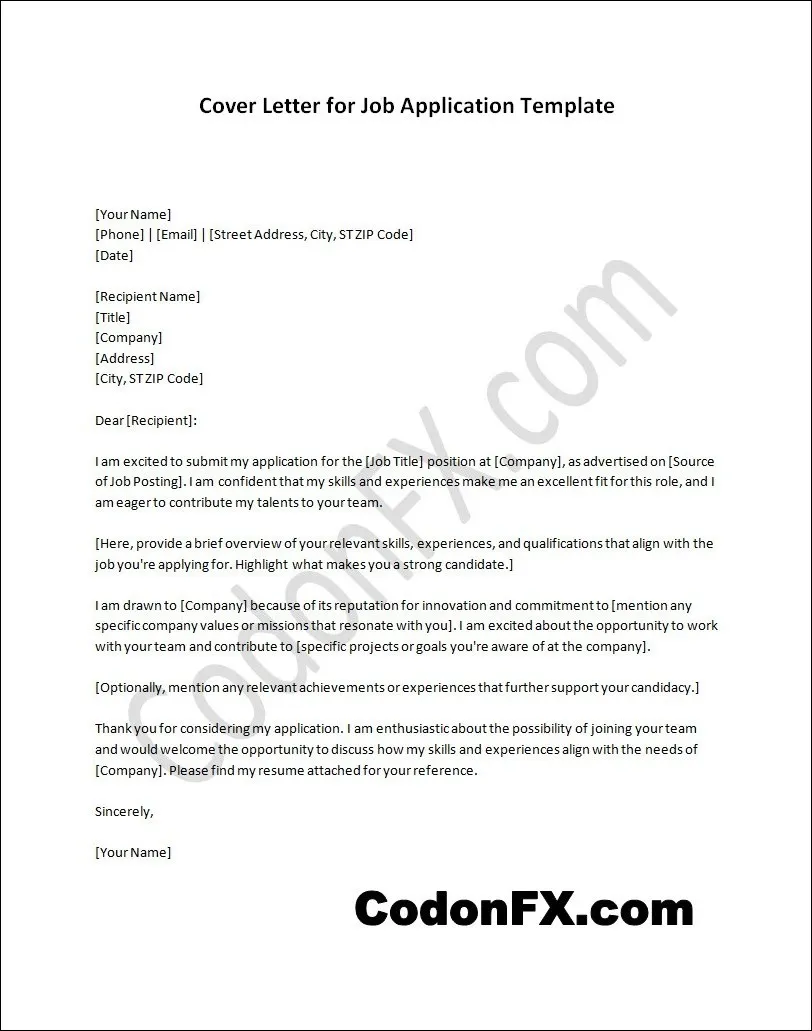What is a Cover Letter and Why is it Important?
A cover letter is a crucial document that accompanies your application form or resume when applying for a job. It serves as your personal introduction, allowing you to expand on your qualifications, showcase your personality, and demonstrate your genuine interest in the specific role and company. While a resume provides a snapshot of your skills and experience, the cover letter gives you the opportunity to tell a story, explain why you’re the perfect fit, and persuade the hiring manager to delve deeper into your application. Many hiring managers consider the cover letter to be a vital part of the application process, using it to assess your communication skills, attention to detail, and overall suitability for the position. A well-crafted cover letter can significantly increase your chances of getting an interview, while a poorly written one can lead to your application being immediately rejected. It’s your first chance to make a positive impression and set yourself apart from other candidates.
Understanding Application Form Requirements
Before you begin writing, carefully review the job application form and the specific instructions provided by the employer. Many companies require you to submit a cover letter, but some may have specific guidelines regarding its content, length, or format. Pay close attention to these requirements, as failing to adhere to them could be a sign of your lack of attention to detail. Some application forms may ask for specific information to be included in your cover letter, such as addressing particular skills or experiences mentioned in the job description. Understanding the employer’s needs and addressing them directly is a key component of a successful cover letter. Research the company’s culture, values, and recent news to show your genuine interest and ensure that your cover letter is tailored specifically for them. The better you understand what the company expects, the better your chances of crafting a cover letter that truly resonates with the hiring manager.
Highlighting Your Skills and Experience
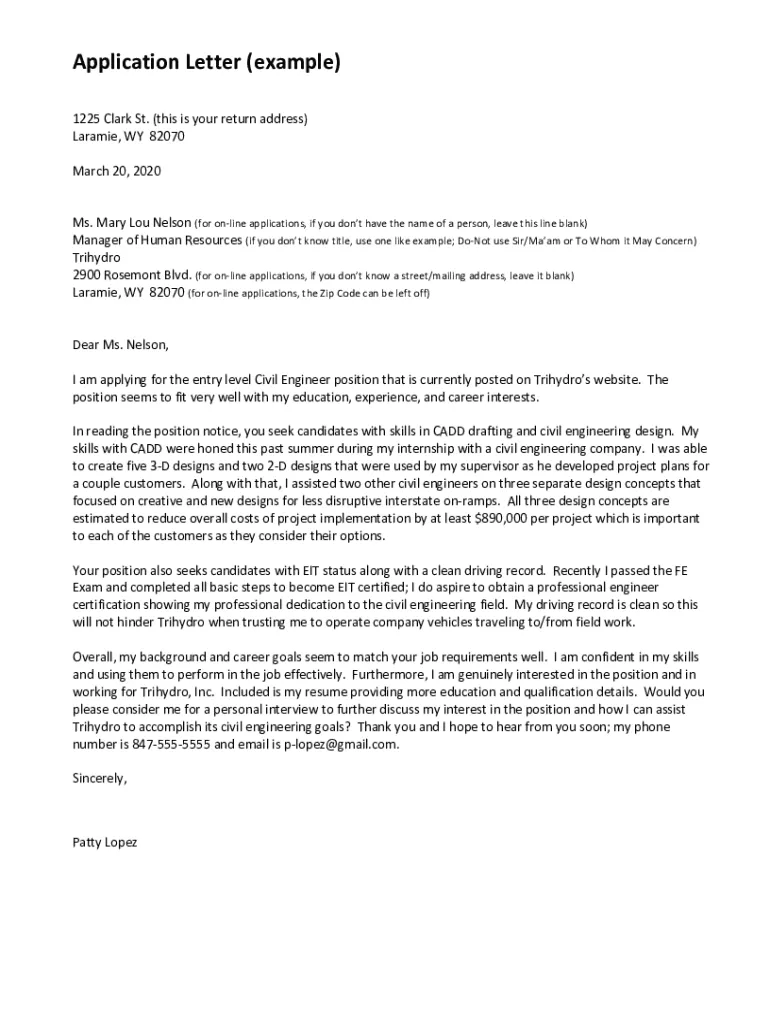
Your cover letter is your opportunity to highlight the skills and experience most relevant to the job you are applying for. Don’t simply restate your resume; instead, expand on your accomplishments and demonstrate how your skills align with the employer’s needs. Identify the key skills and qualifications mentioned in the job description and provide specific examples of how you’ve successfully utilized those skills in previous roles. When possible, quantify your achievements by using numbers and data to demonstrate your impact. For example, instead of saying “Managed social media accounts,” you could write “Increased social media engagement by 30% within six months.” Emphasize the skills and experiences that make you the ideal candidate, and provide concise and compelling examples of how you’ve used these skills to achieve positive outcomes in your previous roles. Remember to always align your presentation with the specific requirements outlined in the job description to make your cover letter more compelling.
Tailoring Your Cover Letter to the Job
One of the biggest mistakes applicants make is sending generic cover letters to multiple employers. Each cover letter should be specifically tailored to the job and company you are applying to. This means taking the time to research the company, understand its mission and values, and identify the specific skills and experiences they are looking for. Refer to the job description and use the same keywords and phrases to make your cover letter stand out to the hiring manager. Show how your skills and experiences align with the requirements of the role and how you can contribute to the company’s success. Demonstrate your understanding of the company’s goals, and explain how your skills can help them achieve those goals. This level of personalization shows that you are genuinely interested in the opportunity and that you have taken the time to understand the role and the company. A tailored cover letter significantly increases your chances of getting noticed and getting an interview.
Researching the Company and the Role
Before writing your cover letter, conduct thorough research on the company and the specific role you are applying for. Visit the company’s website, read news articles, and browse their social media profiles to understand their culture, values, and recent developments. Understanding the company’s mission, goals, and challenges will help you tailor your cover letter to their specific needs and demonstrate your genuine interest. Explore the job description carefully, paying close attention to the required skills, qualifications, and responsibilities. Identify the key requirements and highlight how your skills and experience align with them. Use the same keywords and phrases from the job description in your cover letter to make your application more visible to the hiring manager. Researching the company and role not only helps you tailor your cover letter but also prepares you for the interview, as you’ll already have a good understanding of the company’s background and the position requirements.
Structuring Your Cover Letter for Impact
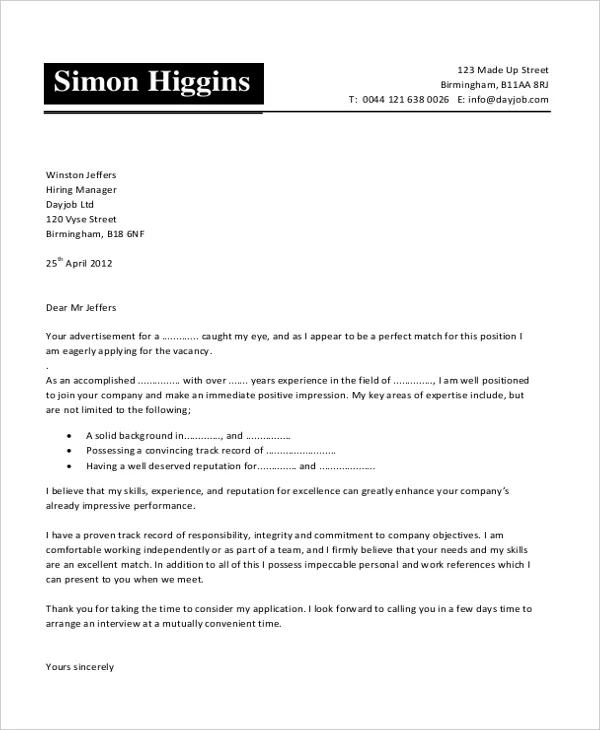
A well-structured cover letter is easy to read and effectively conveys your key qualifications. Start with a compelling opening paragraph that grabs the reader’s attention and clearly states the purpose of your letter. Follow this with one or two body paragraphs that highlight your relevant skills and experience, providing specific examples of your accomplishments. Use a clear and concise writing style, avoiding jargon and overly complex sentences. Use bullet points or short paragraphs to break up the text and make it easier to scan. Make sure to include a call to action in your closing paragraph, expressing your interest in an interview and providing your contact information. Maintain a professional tone and use a standard business letter format, including your contact information, the date, the hiring manager’s name and title (if known), and a proper salutation and closing. Proper formatting makes it easier for the hiring manager to grasp your essential information.
Writing a Compelling Opening Statement
The opening paragraph of your cover letter is the first impression you make on a hiring manager, so it needs to be compelling and attention-grabbing. Start with a concise and engaging statement that immediately captures the reader’s interest. State the position you are applying for and explain where you saw the job posting. Then, briefly summarize your key qualifications and highlight what makes you an ideal candidate. Show enthusiasm for the role and the company. Avoid generic phrases such as “I am writing to express my interest…” Instead, be specific and focus on your unique strengths. Mention something that caught your eye about the company or role to show you have done your research. The goal is to make the hiring manager want to read on. A strong opening sets the tone for the rest of your cover letter and increases your chances of making a positive impression.
Showcasing Your Achievements and Qualifications
In the body paragraphs of your cover letter, showcase your achievements and qualifications in a clear and concise manner. Instead of just listing your responsibilities, focus on your accomplishments and the positive outcomes you achieved in previous roles. Provide specific examples of how you utilized your skills to overcome challenges, solve problems, or exceed expectations. Quantify your accomplishments whenever possible. Did you increase sales by a certain percentage? Did you streamline a process and save time or money? Numbers and data make your claims more credible and impactful. Tailor your examples to the job description, highlighting the skills and experiences most relevant to the position. Use the STAR method (Situation, Task, Action, Result) to structure your examples, providing context, describing your actions, and outlining the results. This approach helps the reader clearly understand your contributions.
Using Action Verbs to Describe Your Skills
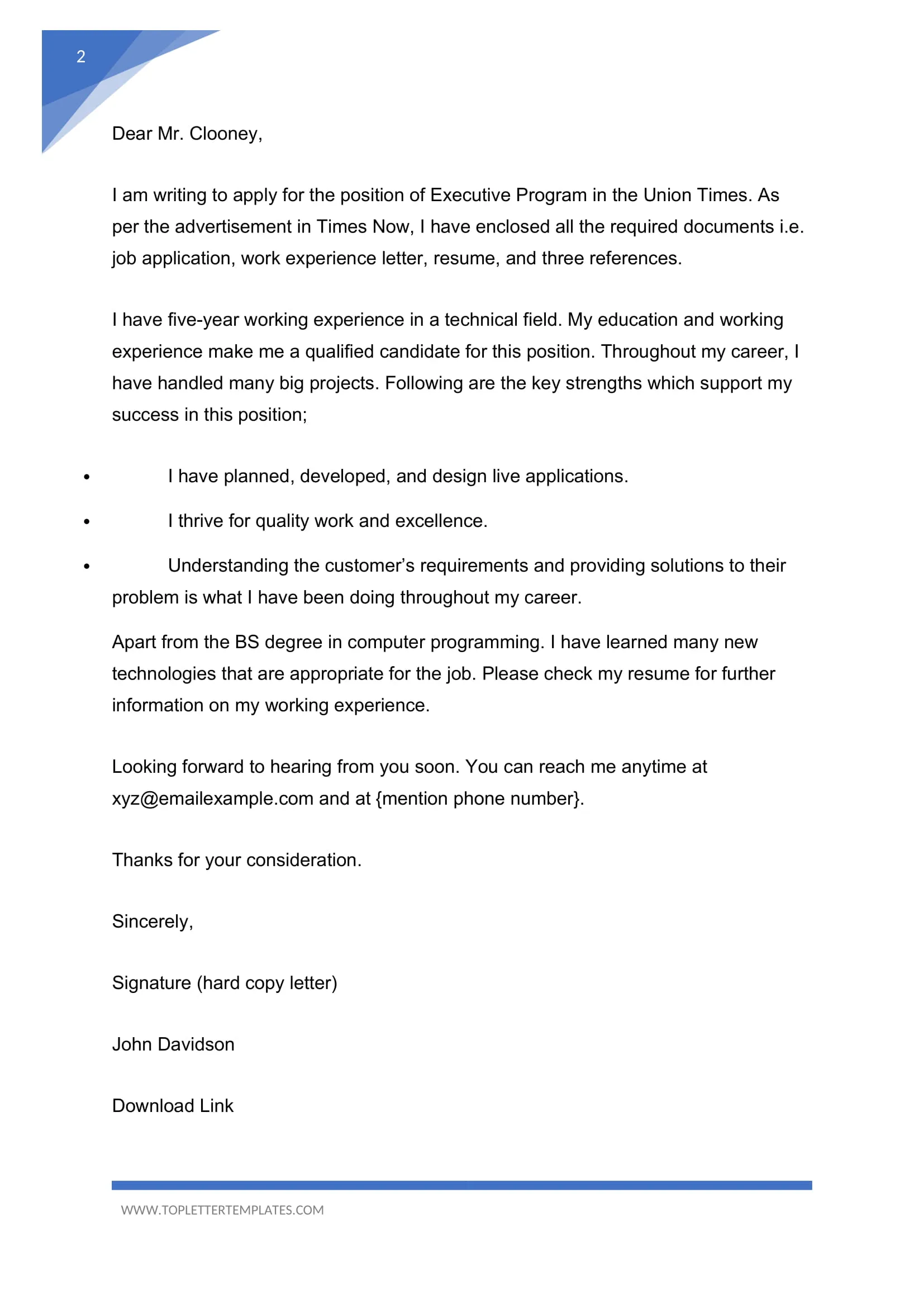
Using strong action verbs is essential for creating a dynamic and compelling cover letter. Action verbs help you showcase your skills and accomplishments by describing your specific actions and responsibilities. Instead of using passive language, such as “responsible for,” use active verbs such as “managed,” “led,” “developed,” or “implemented.” This creates a more engaging and professional tone. Start each sentence with an action verb to emphasize your accomplishments and make your cover letter more impactful. Choose verbs that accurately reflect your skills and match the language used in the job description. For example, if the job description emphasizes project management skills, use action verbs like “coordinated,” “oversaw,” or “delivered.” Action verbs make your cover letter more interesting to read and allow the hiring manager to quickly understand your key skills and experiences. The correct use of action verbs creates a strong impression and sets you apart.
Quantifying Your Accomplishments for Impact
Quantifying your accomplishments is a powerful way to make your cover letter more persuasive. Use numbers, percentages, and data to provide tangible evidence of your achievements and demonstrate your value to the employer. Instead of saying “Improved customer service,” say “Improved customer satisfaction scores by 15%.” Instead of stating that you managed a team, specify how many people you managed. Use metrics and data to showcase the positive impact of your work. This gives the hiring manager concrete proof of your capabilities and makes your claims more credible. Including numbers highlights your performance and provides quantifiable results, showing the impact you’ve made in your previous roles. When possible, include specific figures related to sales, cost savings, efficiency improvements, or other measurable outcomes. This evidence adds weight to your claims and significantly improves your chances of making a positive impression.
Demonstrating Your Knowledge of the Company
Demonstrating your knowledge of the company is an important step in creating a successful cover letter. It shows the hiring manager that you’ve taken the time to research the company and that you are genuinely interested in the opportunity. Mention the company’s mission, values, and recent achievements to show that you are familiar with their work and their goals. If possible, tailor your skills and experiences to the company’s specific needs and challenges. Show how your background can help them achieve their goals. You can also refer to specific projects, products, or initiatives that interest you, further demonstrating your research. Make sure the details you include are accurate and up-to-date. Mentioning the company name and the specific role is a good starting point. Referencing their products or services can also demonstrate a genuine interest in the company. The hiring manager appreciates candidates who take the time to understand their organization and show how they can contribute.
Addressing the Employer’s Needs
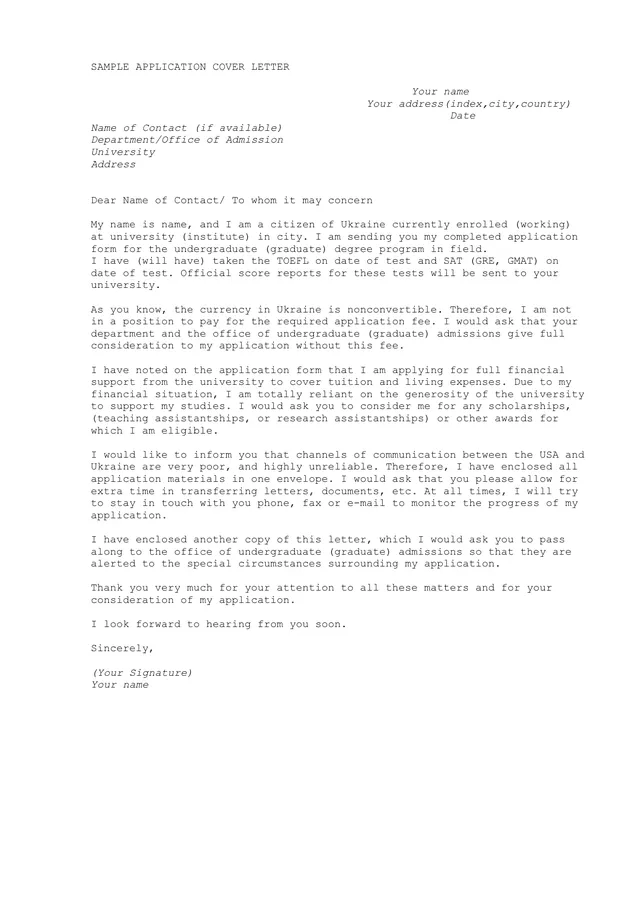
Your cover letter should always address the employer’s specific needs and how you can meet them. Read the job description carefully and identify the key skills, qualifications, and responsibilities. Then, highlight your relevant skills and experiences, providing specific examples of how you have successfully met similar challenges in the past. Explain how your skills align with the employer’s needs and how you can contribute to their success. Consider the company’s priorities and show how your experience aligns with those goals. Make sure you use the same keywords and phrases from the job description to make your application more visible to the hiring manager. Addressing the employer’s needs shows that you understand the role and that you are well-prepared to succeed. Tailoring your cover letter ensures that you are perceived as a strong fit for the position.
Closing Your Cover Letter with Confidence
The closing paragraph is your final opportunity to make a positive impression and encourage the hiring manager to take action. Summarize your key qualifications and restate your interest in the position. Then, include a clear call to action. For instance, state that you are available for an interview and provide your contact information. Keep your tone professional and enthusiastic. Avoid generic phrases such as “Thank you for your consideration.” Instead, express your genuine interest in the opportunity and thank the hiring manager for their time and consideration. It’s also helpful to indicate when you’re available for an interview or to follow up. A strong closing paragraph reaffirms your interest and makes it easy for the hiring manager to move your application forward.
Proofreading and Editing Your Cover Letter
Proofreading and editing your cover letter is essential for ensuring it is free of errors and conveys a professional image. Carefully review your cover letter for any grammatical errors, spelling mistakes, and typos. Ask a friend, family member, or career counselor to read your cover letter for feedback. They can provide an objective perspective and identify any errors you may have missed. Pay close attention to the tone, ensuring it is appropriate for the job and company. Make sure the language is clear, concise, and easy to understand. Proofread your letter multiple times, even after receiving feedback. Check for consistency in formatting, font, and style. Poor grammar and spelling mistakes can reflect poorly on you. Taking the time to proofread and edit your cover letter shows the hiring manager that you pay attention to detail and are committed to presenting your best self.
Seeking Feedback and Refining Your Draft
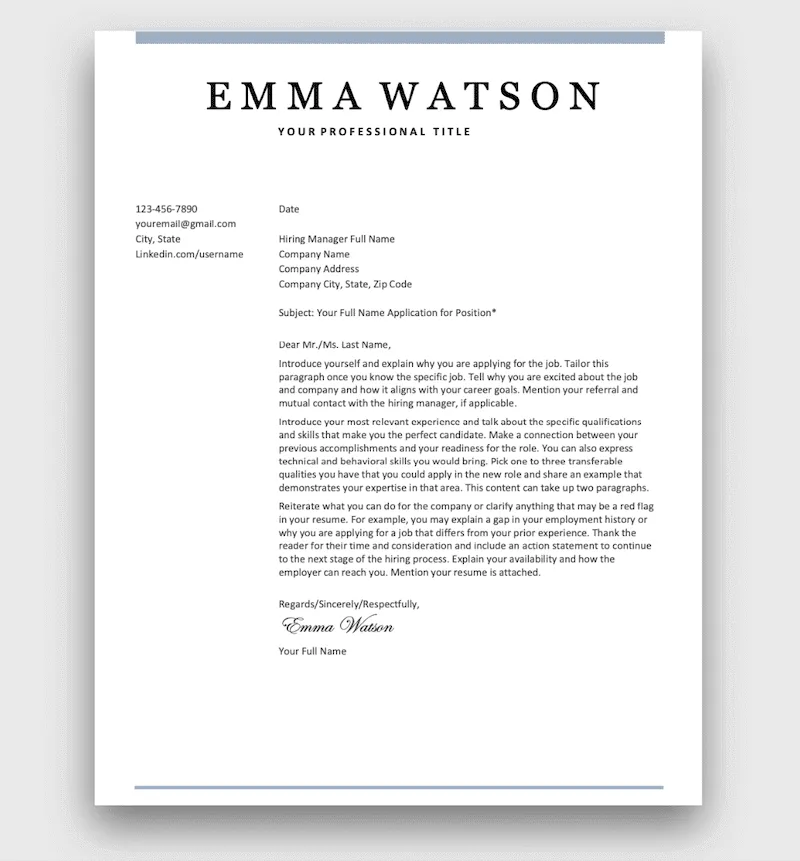
Seeking feedback from others is a valuable step in refining your cover letter. Ask trusted friends, family members, or career counselors to review your draft and provide constructive criticism. They can provide an objective perspective on your writing style, content, and overall effectiveness. Ask them to look for any grammatical errors, spelling mistakes, and inconsistencies. Request feedback on the clarity, conciseness, and overall impact of your letter. Ask them to assess whether it effectively conveys your skills, experiences, and enthusiasm. Be open to their suggestions and be prepared to make revisions based on their feedback. This process helps you identify areas for improvement and strengthens the overall quality of your application. By incorporating the feedback, you can create a cover letter that is more compelling and showcases you in the best possible light. Getting an outside perspective can reveal details you may have overlooked.
Cover Letter Formatting and Design
Proper formatting and design can make your cover letter more visually appealing and easier to read. Choose a professional and easy-to-read font, such as Times New Roman, Arial, or Calibri. Use a font size of 11 or 12 points. Use standard business letter format, including your contact information, the date, the hiring manager’s name and title (if known), and a proper salutation and closing. Use single-spacing within paragraphs and double-spacing between paragraphs. Use clear headings and subheadings to organize your content and make it easier to scan. Make sure the layout is clean, consistent, and easy to read. Avoid excessive use of bolding, underlining, or italics. A well-formatted and designed cover letter demonstrates your professionalism and attention to detail.
Choosing the Right Font and Layout
The font and layout of your cover letter play a significant role in its readability and overall presentation. Select a professional and easy-to-read font, such as Times New Roman, Arial, or Calibri. Use a font size of 11 or 12 points for the body of your text, ensuring that it is easy on the eyes. Choose a layout that is clean, uncluttered, and easy to scan. Use standard business letter format with consistent margins. Ensure that the spacing between paragraphs is consistent and visually appealing. Avoid using a font that is too ornate or difficult to read. The layout should be simple and professional. The goal is to make your cover letter accessible and easy for the hiring manager to read and process. A well-chosen font and layout enhances the overall professionalism and effectiveness of your application.
Avoiding Common Cover Letter Mistakes
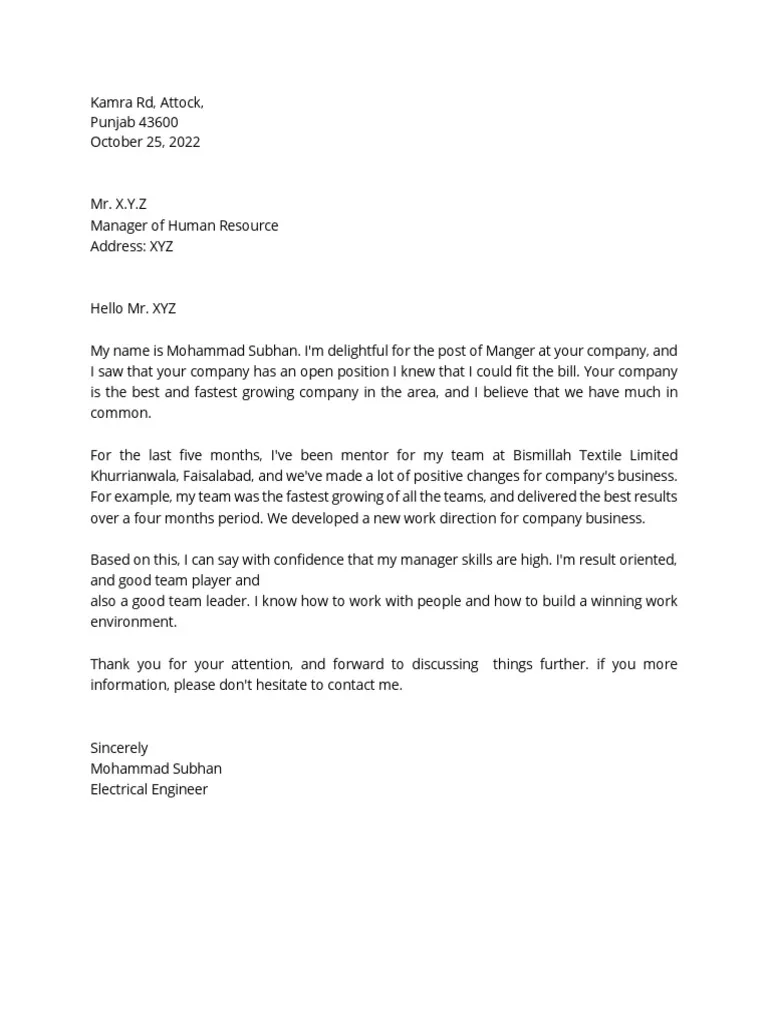
There are several common mistakes that job seekers make when writing cover letters. Avoiding these errors can significantly increase your chances of getting noticed. One of the most common mistakes is using generic phrases that could apply to any job. Another mistake is being too vague or general. Focus on specific examples and quantifiable results to demonstrate your skills and achievements. Do not focus solely on yourself. Tailor your cover letter to highlight how your skills and experience align with the employer’s needs. Failing to proofread and edit your cover letter is a major mistake, as grammatical errors and typos can create a negative impression. Review these sections to improve the quality of your cover letters. By avoiding these common mistakes, you can significantly improve the impact and effectiveness of your application.
Overusing Generic Phrases
One of the most frequent mistakes in cover letters is the overuse of generic phrases. Avoid using clichés and phrases that could apply to any job or company. For example, instead of writing “I am a team player,” provide a specific example of how you have worked effectively in a team. Instead of “I am detail-oriented,” describe a situation where your attention to detail helped you achieve a positive outcome. Replace generic statements with specific examples that demonstrate your skills and experience. This helps your cover letter stand out and makes it more engaging. The goal is to show, not just tell, and using specific details makes your claims more believable. Generic phrases are often overused and can make your application seem impersonal.
Being Too Vague or General
Being too vague or general is another common mistake that can weaken your cover letter. Avoid making broad statements about your skills or experiences without providing specific examples or details. For instance, instead of saying “I have experience with project management,” specify what types of projects you managed and what the results were. Quantify your accomplishments whenever possible. Provide measurable data to support your claims. Explain how you used your skills to achieve specific outcomes. Show, don’t just tell, the hiring manager what you’ve done. When you’re vague, it’s difficult for the hiring manager to understand your qualifications and how you can contribute to the company. Providing specific details also helps to demonstrate your understanding of the role and the company’s needs.
Focusing Solely on Yourself
While your cover letter should highlight your skills and experience, avoid focusing solely on yourself. The hiring manager is primarily interested in how you can benefit their organization. The cover letter is an opportunity to showcase the value that you can bring to the company. Tailor your cover letter to the employer’s needs and show how your skills and experience align with the job requirements. Focus on how you can contribute to their success and address the challenges they face. Refer to the job description and use the same keywords and phrases to show that you understand their needs and that you are a good fit for the role. By demonstrating your value and highlighting how your skills can contribute to the organization, you increase your chances of getting an interview.
Failing to Proofread Thoroughly
Failing to proofread your cover letter thoroughly is a critical mistake. Grammatical errors, spelling mistakes, and typos can create a negative impression and reflect poorly on your attention to detail. Proofread your cover letter multiple times, and ask a friend, family member, or career counselor to read it for feedback. Take the time to check for inconsistencies in formatting, font, and style. Use spell-check and grammar-check tools, but do not rely on them entirely. Manual proofreading is essential, as these tools may not catch all errors. Reading your cover letter aloud can also help you identify errors. A cover letter with errors can make the hiring manager question your professionalism and abilities. Thorough proofreading helps you ensure a polished, error-free document that enhances your chances of getting noticed.
